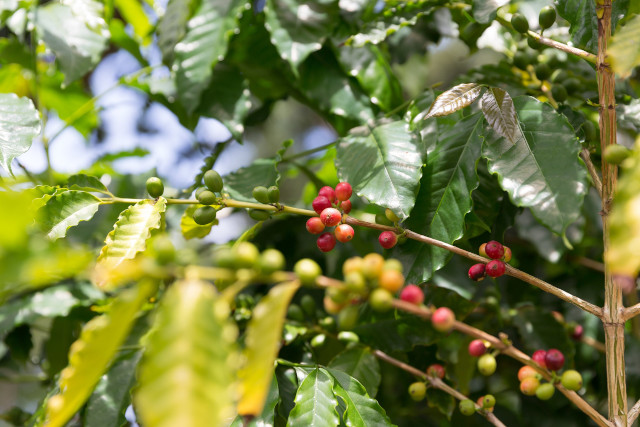For ordinary people, buying stock shares is just like buying a coffee tree. When the price of the coffee tree rises, most of them choose to sell it and make a profit. But when it comes to the stock saving method, it is to take good care of the coffee tree after planting it, and wait for the coffee tree to bear fruits and produce coffee beans, and after sold coffee beans, then use the money (i.e. stock share dividends) to buy another one or two coffee trees. Over time, there will be more and more coffee trees in the coffee farm. Eventually after so many days have passed that the coffee beans are too much to sell and drink coffee.

The sooner you start saving, the better, but it's never too late if you're willing to start.
A retired teacher started learning how to save stocks at the age of 45. He is now 65 years old and receives a dividend of more than 2 million pesos a year, which is better than when he was a teacher.
The salary he saved from his early work was given to his retired father to "play stocks". Unexpectedly, because of the Asian financial crisis in 1997 and the tech bubble in 2000, he worked hard to "play" stocks for 5 years, and finally Just don't win or lose.
At that time (2000), at the age of 45, he only had about 2 million pesos in savings, and he entered the countdown stage before retirement. A student who came to the office one day mentioned the book "Rich Dad, Poor Dad" to the teacher. After reading it, he became interested in investing, and even determined to accumulate assets to tens of millions of pesos before the age of 50.
So he began to read relevant books and periodicals, and through the "Lazy Investing Method", after getting to know the character Warren Buffett, he spent a year studying the investment books of the stock master, and then paid for the "Buffett Class". I just want to copy the master's operation method and get a little more retirement fund for myself.
Learn Warren Buffett's Investing Technique
At the beginning of 2001, he took back the 2.2 million pesos in the securities account and operated it by himself. After learning Buffett's investment spirit, he knows that good stocks should be bought at good prices. As long as he judges that the current stock price is not beautiful enough, he will patiently save money while waiting for the stock price to plummet.
At this time, he seized the right moment, and as soon as he saw the stock price plummeting, he stepped in to buy stocks. Because he didn't know how long the stock market would fall at the time, he bought 1 or 2 stocks every time the stock fell. If the stock price fell again after the overweight, he would buy it again. He aimed his firepower at the selected 4 stocks. It took 2 months before and after 3 months, each stock has at least 10 or more.
In December 2004, in just over 3 years, he relied on 4 major stocks to achieve his wish of becoming a multi-millionaire in advance. In 2006, with the sharp rise in the stock market, his assets doubled to 20 million pesos again.
However, the prosperity was followed by the financial turmoil. At the end of 2007, the stock market began to collapse, all the way to mid-2008, his stock assets fell to a minimum of only 7.5 million pesos. However, he found that although the stock price collapsed, the dividends he received in that year did not decrease, it was still the same 700,000 to 800,000 pesos, so he realized the benefits of saving shares, that is, after buying, no matter the stock price rises or falls, as long as you focus on In a good company it's okay if it goes bad.
"Coffee Farm Stock Saving Method"
He calls his method of saving shares the "Coffee Farm Stock Saving Method". He described that buying a stock is like planting a coffee tree. Buy it at a low price and wait for the coffee tree to bear fruit and produce coffee. After the beans, the money from selling coffee beans will be used to buy coffee trees. In this way, there will be more and more coffee trees in the coffee farm. One day, the coffee beans produced will be too many to drink.
How is the "Coffee Farm Stock Saving Method" planted ? There are 2 buying principles and 3 selling conditions: 2 buying principles are: good company, good price; 3 selling conditions are: the company goes bad, the stock price is too expensive, and find a better target.
Entering the market: Follow 2 principles, only buy when a good company has a good price
His investment method is derived from Buffett's investment law, but he is more simplified. "The simpler it is, the easier it is to execute." He has a friend who introduced him to buy a certain stock during the financial tsunami. At that time, the stock price was pretty low, and his friend sold it after it rose. However, the dividend he received has already exceeded the stock price at that time, and the assets have multiplied many times. However, the stock assets of that friend have not grown much over the years. Therefore, you don't need to learn too complicated moves to earn the price difference, you only need to simply save shares to accumulate assets.
The buying principles are detailed below:
Principle 1: Good Company
The good company in his mind is a company that will make money and distribute dividends stably, and he prefers leading stocks in the industry.
For all kinds of concept stocks, he never touched such as 3D printing concept stocks, solar energy concept stocks, passive component concept stocks, etc. that were once popular. Due to the rapid rotation of various concept stocks, he believes that his knowledge is limited, so it is best not to touch unfamiliar companies.
A "good company" has 5 qualities:
1. Large companies and maintain consistent profitability.
How much capital is a big company? Must be listed for at least 2 years.
2. Have a good management team.
Whether the management team is good or not can actually get some information from newspapers and magazines. For example: before some companies go public, the management team will break out some controversial news more or less, and those companies should keep a distance.
3. Simple and easy to understand business.
Most retail investors are not full-time investors, and they don't have much time to research stocks after work. In fact, if you want to create passive income, you don't have to make it so complicated. Unless you are interested, you can choose a simple and easy-to-understand company.
4. Continued competitiveness.
Back then, the egg muffin store was sprouting like bamboo shoots after the rain, but the swarms were prone to foaming, because the threshold was not high and there was no protection of the moat. Only a company that can stand out in excessive competition is a truly competitive company.
5. Shareholding by directors and supervisors is stable.
If the directors and supervisors of a company have been selling their own stocks, it means they have no confidence in their own company.
In fact, the easiest way to identify the characteristics of the first five good companies is to find out the leading companies in various fields. Leading companies have used time to defeat all kinds of enemies and prove their competitiveness.
Principle 2: Good Price
The purpose of depositing shares is to receive a steady stream of income (passive income), so the yield rate of the deposit shares is compared with the bank's interest rate. At present, the bank's 1-year fixed deposit interest rate is less than 1%. He believes that the yield rate of good stocks should be at least 5%, and the yield rate formula of stocks is as follows:
Yield = Cash Dividend / Buy Stock × 100%
There are two conditions that affect the yield rate: one is the stock price and the other is the dividend. When a company pays a steady dividend, if the stock price falls sharply, the yield rises sharply.
The stock price goes up and down every day, which is mainly affected by the short-term and the trading of the price difference. However, how much dividends the company will distribute each year will not be disturbed by short-term stock price fluctuations. Therefore, the depositors can wait slowly and keep Wait until the stock price goes down to buy it.
The stock market crash is often the time when the stock market jumps off the building and a big auction. At this time, smart investors should bravely buy good companies.
Appearance: Check 3 conditions, exit the market unpredictably to keep profits
Since it is necessary to hold shares for a long time to make considerable profits, the principle of depositing shares is "try to plant trees without cutting down trees". I hope that after buying a good company at a good price, do not sell it. However, if you encounter the following 3 In such a situation, he will sell the deposited shares.
Condition 1: The company's physique deteriorates
When the company's profits suddenly drop sharply from stability, or even lose money, or when a good leader dies or leaves, and the company undergoes major policy changes, it means that the originally expected good company has turned bad and may not be worthy in the future. And the company might not be able to distribute dividends. of course, we must first run away.
Condition 2: When the yield is less than 2.5%
Once the yield falls below 2.5%, it usually means that the stock price has skyrocketed.
Condition 3: Find a better target















































 Philippine Peso Exchange Rate
Philippine Peso Exchange Rate







Comments powered by CComment